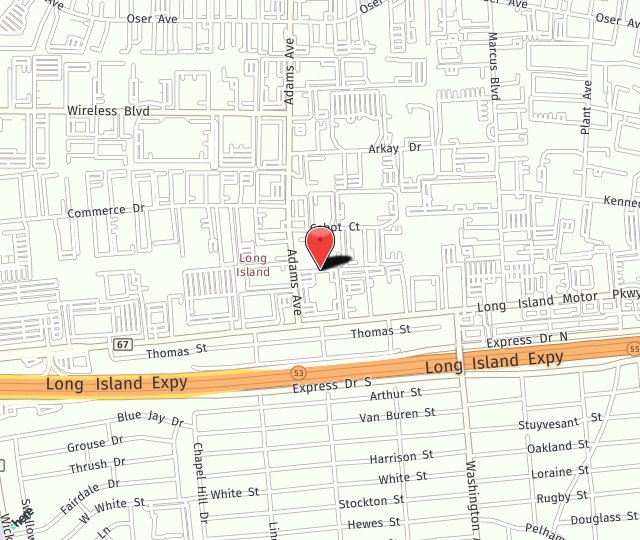The appearance of fine lines and wrinkles on the skin is considered an inevitable part of the aging process for most people. It resulting in creases, folds and hanging skin, on the face, neck, hands and other areas of the body. These changes in the skin often make you look older, sad, angry or tired, and may not reflect the energy and youthfulness you still feel.
Many people are bothered by the appearance of wrinkles and seek treatment to rejuvenate the skin and restore a younger-looking appearance. Fortunately, there are countless treatment options available to reduce the appearance of fine lines and wrinkles, including creams, dermal fillers, peels, laser treatments and surgery. The best procedure for each patient depends on the patient’s individual skin condition and amount of correction desired.
Causes of Wrinkles and Fine Lines
The skin is made up of three different layers, the epidermis, dermis and subcutaneous tissue. Each of which contribute to the full, strong and smooth appearance that we are born with. The epidermis, which is the outer layer, protects the skin from environmental toxins with special cells called keratinocytes. Underneath the epidermis is the dermis layer, which provides connective tissues including collagen, elastin and other proteins that provide strength and flexibility to the skin. The subcutaneous tissue at the bottom layer is made up of fat cells that insulate the body and produce a full, plump appearance to the skin.
Each of these layers is affected over time as a result of aging, genetics and environmental factors, leading to a more wrinkled, sagging appearance. The skin layers tend to thin while production of tissue slows down, making the skin more susceptible to damage and changes as it lacks its previous support and fast repair abilities. The result is thinner skin with visible lines and wrinkles that can no longer be “filled in” by collagen and fat cells.
"Dr. Mark Epstein and his staff made my experience a wonderful one. I have only great things to say about the quality of care that I received and have recommended Dr. Epstein to numerous friends. My procedure was over 4 years ago and I am still very happy with the results over time. You get what you pay for and it’s worth every penny."
Treatment of Wrinkles and Fine Lines
As the skin ages, lines and creases form in areas that are affected by common muscular movement, such as facial expressions around the eyes, on the forehead or at the corners of the mouth. Through years of repeated muscle contraction, lines and wrinkles tend to develop in these areas. Over time, habitual sleeping positions, poor hydration, and rapid changes in weight loss and gain may also lead to the formation of wrinkles.
Fortunately, there are a wide range of treatment options to help restore a natural, younger-looking appearance that help patients look as good as they feel. Treatment depends on the cause and severity of wrinkles, as well as the age and personal preference of the patient, and may include:
- Topical creams
- Microdermabrasion
- Photorejuvenation
- Laser treatments
- Chemical peels
- Soft tissue fillers
- Facelift
Prevention of Wrinkles and Fine Lines
There are many ways to prevent or reduce the effects of photoaging on the skin which require simple lifestyle changes and adjustments. If avoiding the sun is not possible, it is essential to use sunscreen with adequate SPF and wear a hat and protective clothing. Avoiding alcohol and smoking can also keep skin healthy and prevent wrinkles from developing. Eating a balanced diet and keeping stress at a minimum helps maintain an overall healthy lifestyle and allows skin to look its best as well.
Maintaining a healthy lifestyle can help prevent or postpone wrinkles and other signs of aging. There are also many over-the-counter anti-aging products available to help prevent wrinkles from developing. The doctor will help the patient develop a comprehensive individual plan for long-term prevention of the appearance of wrinkles, fine lines and other skin changes.
Environmental Factors
Many people also develop wrinkles and other unwanted skin changes as a long-term result of excessive exposure to harmful substances. Ultraviolet light from the sun or artificial tanning is the leading cause of premature aging, and causes the collagen and elastin fibers to break down. Resulting in sagging, weakened skin that can more easily develop wrinkles and other signs of aging. Smoking and air pollution also affects the appearance of the skin and can result in early aging by triggering changes in the blood supply to the skin. These factors lead to photoaging, which accounts for up to 90% of premature skin aging.
What are Dermal Fillers?
Fillers are substances that are injected into the skin of the face to add volume where it has been lost subsequent to the aging process. Fillers can be classified as temporary, semi-permanent and permanent. Temporary fillers last up to about one year, semi-permanent fillers last for a few years and permanent fillers last for the life of the patient. Although it may seem best to choose a permanent filler because it does not have to be administered again, remember that the aging process is a dynamic process and that the skin will gradually thin as aging proceeds.
What do fillers treat?
As fillers ad volume, they are ideally suited to treat lines of the face that result secondary to atrophy of the skin and sagging of the skin due to gravitational influences. Examples of these areas are the nasolabial folds (the creases between the lips and the cheek), the marionette (puppet) lines which are natural downward extensions of the nasolabial folds, and the corners of the mouth.
Fillers can also add volume to areas that have lost their fullness, again secondary to subcutaneous atrophy. This includes the tear trough area (the curved indentation at the junction of the lower eyelid and the upper cheek), the area over the cheekbones, lips (upper and lower), pre-jowl recess (the part of the jaw line in front of the jowl and behind the chin – fillers here help mask the outline of the jowling), and the cheeks.
Fillers can also be used to augment the nose and change the contour (“a rhinoplasty without surgery”) and supplement the use of Botox in the glabella area of the forehead (the “11″ lines above the root of the nose)
Types of Dermal Fillers
Collagen is a substance obtained from the dermis (a layer of the skin). Originally produced from bovine (cow) tissue, recent advances in recombinant DNA technology have allowed it to be produced in such a way that it resembles the chemical structure of human collagen, thus eliminating the allergic reactions occasionally seen with Bovine collagen and the need for allergy testing. Although Collagen can produce some nice results, the main problem with it is the relatively short duration of the result, typically a few weeks to a couple of months. For this reason, Collagen (Zyderm I & II, Zyplast) is rarely used in my practice.
Hyaluronic acid (Juvederm® XC, Juvederm Voluma® XC – hyaluronic acid is a normally occurring substance within the dermis of human skin. ®) These products are not made from human or animal tissue, but rather manufactured using DNA recombinant technology in the laboratory. Hyaluronic acid (HA) is an extremely versatile product. Each of these HA’s have specific characteristics that lend them to different indications on the face. For instance, Juvederm Voluma® is best to add volume to the cheeks where as Juvederm Voluma® is great for Lip Enhancement.
What fillers do we offer?
- Juvederm Ultra Plus®
- Juvederm Voluma®
- Juvederm Vollure®
- Juvederm Volbella®
- Bellafill®
- Teoxane® RHA Fillers
In our office, we offer several of the more commonly used fillers:
Juvéderm® family of fillers– these are non-animal derived hyaluronic acids – a naturally occurring substance that plays a vital role in hydrating your skin and replenishing its natural volume. Juvederm typically lasts about 9 – 12 mos with Juvederm Voluma lasting 1- 2 years.
Juvéderm® has been FDA approved to last up to about one year. Juvéderm Ultra Plus is a little more robust formulation for volumizing deeper wrinkles and folds.
Bellafill® – Bellafill®is a great filler for nasolabial folds, cheeks and even acne scars, but should not be used for the lips or under the eyes. Results last up to 5 years!
Do I require skin testing to see if I am allergic to the fillers?
None of the fillers used by Dr. Epstein are derived from animal tissues; therefore skin testing is not required. Juvéderm is an NASHA – Non-Animal Synthesized Hyaluronic Acid.
How are the fillers administered?
Topical anesthetics are available to numb your skin prior to the injection process. These agents are helpful in reducing discomfort during injection. In the past, I have used dental blocks, which are injections of local anesthetics into various areas of the mouth and lips to numb these areas. However, the injection process to place the dental block is uncomfortable in and of itself.
A few years ago, I have switched from using sharp hypodermic needles to inject fillers to a blunt cannula. A cannula is like a hypodermic needle except that the end is blunt and closed. There are tiny holes along the side of the cannula at its end. To use a cannula, a small, sharp hypodermic needle is used to puncture the epidermis (outer layer of the skin) and dermis. It is not inserted further into the skin. Next, the blunt cannula can now be inserted through this tiny hole in the skin and advanced into the facial tissues to place the product. The advantages of the cannula are the following:
- Much less discomfort – there is no sharp needle being advance into your face
- Bruising is very rare – there is no sharp needle causing bleeding in to the tissues
- Better dispersion of the filler
- No need for dental and facial nerve blocks
- Much less risk for injection into a blood vessel – a known cause of complications
Can fillers be combined with Botox?
Yes. In some treatment areas, such as the lips, there can be a synergistic effect when Botox is combined with fillers. Upper lip lines are caused by muscle activity (Botox relaxes the muscles) as well as by loss of volume of the lips (Fillers add the necessary volume). Sometimes, filler is used in the glabella as well to supplement the action of the Botox.
Do you ever mix different types of fillers at one time?
Yes. There is no problem with using different fillers on different portions of the face, matching the problem area with the optimal filler substance.
How do I decide which filler is right for me?
I will listen to your concerns and perform a comprehensive assessment of your facial anatomy. He will then make recommendations and help you to decide what course of treatment is best for you.
How long does a treatment with fillers take?
A typical filler treatment takes about five to ten minutes. If topical anesthesia is used, then add another ten to twenty minutes for the topical agent to take effect. You should see the results from the filler almost instantly, some may be longer to take full effect.
"I can’t say enough about the amazing experience I had with Dr. Epstein and everyone in his office. This was my first experience with any cosmetic surgery; I was both excited and nervous getting my procedures. From the first time I walked in to the office Dr. Epstein listened to my concerns and took the time to explain the procedures and put me at ease. The day of surgery Dr. Epstein and his staff were informative, accommodating, and made me feel comfortable as soon as I arrived. Within 3 days I was back at work with little discomfort, and within 3 weeks I was back to working out and running."
Is there any downtime after filler injections?
With the use of the injection cannula, bruising is very rare. Swelling is also less. Swelling maximizes on day 3-5, so do not mistake swelling for “over correction”. After about one week, the swelling should be mostly resolved, but this varies among individuals. If you have a special event where you cannot afford to have a bruise on your face, you should schedule treatment no sooner than 1 – 2 weeks before the event to allow any bruising to resolve.
Is there anything I can do beforehand to minimize the downtime?
Avoid substances with aspirin and non-steroidal anti-inflammatory agents (NSAID’s) such as Motrin and ibuprofen within one week of your treatment.
Dermal Filler Aftercare
Arnica/Bromeline oral supplements are well known to reduce swelling and bruising. Since using the injection cannula, we have found this unnecessary. Bruising when it happens is usually easily covered up with camouflage makeup, which may be applied immediately. Application of cold packs (20 minutes on, 20 minutes off) for the first few hours up to the first 24 hours, and keeping your head elevated the first two days will also help to minimize swelling and bruising. If you feel any small irregularities or “lumps”, you may massage them until they feel smoother.
If you should develop bruising, blistering, pain or anything unusual after your injection, please call us immediately.
If I have an important event scheduled, can I have a filler treatment?
It is not advisable to have a filler treatment if you have an important event scheduled in the next week or two where your facial appearance is important.
Can I receive fillers on my lunch hour?
From a time standpoint you can, but if the immediate appearance of your face is important, you may wish to do this when you do not have to return to work. It will also be easier to apply cold packs at home than at work.
Are fillers reversible?
The fillers described above are generally not reversible; the effects will fade over time. The effect of hyaluronic acids such as Juvederm can be diminished with injection of a drug called hyaluronidase, but the indication for this is extremely limited.
When should I schedule a follow up appointment?
Two weeks after treatment. By then all the swelling should be resolved and it will be easier to assess your result.
When should I schedule my next treatment?
This is a very personal decision. As duration of effect varies among individuals, the area treated and the type of filler material injected, the best way to answer this question is for you to return when you feel the desire to add additional volume in a given area of your face.
What if I have additional questions?
Please feel free to contact our office at 631-638-6800, or email us at [email protected]. Our staff would be most happy to assist you in any way they can. You may also wish to review our Hyaluronic Acid and Botox information sheets.




